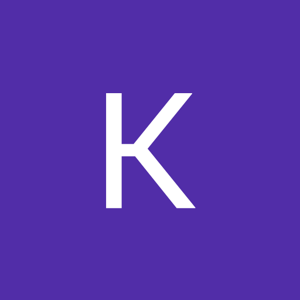
Introduction
The smoke alarm market is a critical component of the global fire safety industry, driven by increasing awareness of fire hazards and the growing demand for safety devices across residential, commercial, and industrial sectors. Smoke alarms are essential for detecting early signs of fire, providing life-saving alerts and preventing significant property damage. With advancements in technology and rising regulations around fire safety, the market for smoke alarms is expanding rapidly.
This article explores the key trends, growth drivers, challenges, and future outlook for the smoke alarm market, with a focus on the period from 2024 to 2032.
Key Companies in the Smoke Alarm market include
· Johnson Controls Inc
· Protec Fire Detection PLC
· Schneider Electric
· Robert Bosch GmbH
· United Technologies Corporation
· Nest Labs
· Siemens AG
· Legrand
· Newell Brands
· Halma Plc
· Hochiki Corporation
· Honeywell International
· Secom Co., Ltd
· Minimax Viking GmbH
Get FREE Sample Report:
Market Overview
A smoke alarm is an electronic device that detects the presence of smoke, often as an indicator of fire. It triggers an alarm to alert occupants of a potential fire emergency, providing them with the time needed to evacuate or take safety measures. Smoke alarms are generally categorized into two types based on their sensing technology:
Ionization Smoke Alarms: These alarms use ionization to detect smoke particles. They are highly sensitive to fast-flaming fires, such as paper or gas fires.
Photoelectric Smoke Alarms: These alarms use a light sensor to detect smoke. They are more sensitive to smoldering fires, which can occur with materials such as upholstery or mattresses.
Dual-Sensor Smoke Alarms: These combine both ionization and photoelectric technologies for more comprehensive detection capabilities.
Smoke alarms are used in various applications, including residential buildings, commercial establishments, schools, hotels, and industrial facilities.
Market Drivers
Several key factors are driving the growth of the smoke alarm market:
Rising Awareness of Fire Safety: Increased awareness regarding fire hazards and fire safety has led to a higher demand for smoke alarms worldwide. Governments, fire departments, and safety organizations emphasize the importance of installing smoke alarms in homes, offices, and other public places. This growing awareness is leading to an increase in adoption across both developed and developing regions.
Government Regulations and Safety Standards: Fire safety regulations are becoming more stringent in many countries, with governments mandating the installation of smoke alarms in residential and commercial buildings. For instance, in the United States, the National Fire Protection Association (NFPA) and local building codes require smoke alarms to be installed in homes, schools, and workplaces. Similar regulations are being enforced in Europe, Asia-Pacific, and other regions, further boosting market demand.
Technological Advancements: Technological innovations in smoke alarm systems are contributing to market growth. Modern smoke alarms now come with features such as smart connectivity, battery life management, remote monitoring, and integration with home automation systems. These features enhance the overall performance and convenience of smoke alarms, making them more appealing to consumers. Smart smoke alarms can be connected to smartphones or smart home systems, sending alerts and notifications when smoke is detected.
Increasing Construction of Residential and Commercial Buildings: The booming construction industry, especially in emerging economies, is a major factor driving the smoke alarm market. The rapid growth of urbanization, residential complexes, commercial establishments, and hospitality sectors has led to an increased need for fire safety solutions. Smoke alarms are a critical part of modern building safety codes and are required to meet specific fire safety standards during the construction phase.
Rising Demand for Home Automation: The growing adoption of smart homes is another key driver for the smoke alarm market. Smoke alarms that integrate with home automation systems offer added convenience and safety for homeowners. These systems can alert the homeowner remotely in case of smoke detection and even interact with other smart devices (e.g., turning on fans or lights to help with evacuation), increasing the overall safety and efficiency of the household.
Consumer Preference for Battery-Powered Alarms: Battery-powered smoke alarms are growing in popularity due to their ease of installation and lack of dependence on an electrical supply. These alarms are particularly favored for retrofitting older buildings and homes where installing hardwired systems may be costly or impractical.
Market Trends
Smart and Connected Smoke Alarms: The trend toward smart smoke alarms is gaining momentum. These devices can send real-time alerts to smartphones or smart home hubs, enabling homeowners to take quick action even when they are not at home. Many of these smart alarms are equipped with features like voice alerts, low-battery warnings, and integration with voice assistants like Amazon Alexa or Google Assistant.
Integration with IoT and AI: The integration of Internet of Things (IoT) and Artificial Intelligence (AI) into smoke alarms is revolutionizing the market. IoT-enabled smoke alarms can provide users with remote monitoring capabilities, while AI can analyze patterns to reduce false alarms. Additionally, AI can improve response time by alerting emergency services automatically when smoke is detected.
Sustainability and Energy Efficiency: As sustainability becomes a priority for consumers, there is an increasing demand for energy-efficient smoke alarms. Manufacturers are focusing on creating long-lasting battery solutions and energy-efficient technologies that minimize waste and contribute to a greener environment.
Portable and Wearable Smoke Alarms: Another emerging trend is the development of wearable smoke alarms. These devices are designed to be worn by individuals, especially in hazardous work environments such as construction sites or factories. They provide real-time alerts to the wearer, ensuring safety in high-risk areas.
Multi-Function Devices: Some smoke alarm systems now come with additional features, such as carbon monoxide detection, air quality monitoring, and gas leak detection. These multi-functional systems provide a more comprehensive approach to household and building safety.
Market Challenges
High Cost of Smart Smoke Alarms: While the demand for smart smoke alarms is growing, the higher cost of these advanced systems compared to traditional smoke alarms may deter some consumers. For many individuals, especially in developing countries, affordability remains a challenge.
False Alarms: False alarms can lead to complacency, with some consumers disabling or neglecting their smoke alarms. Manufacturers are working on improving the reliability of smoke detectors to minimize false alarms caused by factors like cooking smoke or steam.
Lack of Awareness in Developing Countries: While awareness is growing in many developed nations, a lack of awareness about the importance of smoke alarms in certain developing regions remains a challenge. Low-income households in these regions may not prioritize smoke alarms due to limited financial resources.
Maintenance and Battery Replacement: Ensuring regular maintenance, such as battery replacements and system checks, is essential for the proper functioning of smoke alarms. Consumers often neglect these tasks, which can lead to malfunctioning alarms and reduced effectiveness in emergency situations.
Market Segmentation
The smoke alarm market can be segmented based on:
By Technology:
Ionization Smoke Alarms
Photoelectric Smoke Alarms
Dual-Sensor Smoke Alarms
Smart Smoke Alarms
By Power Source:
Battery-Powered Smoke Alarms
Hardwired Smoke Alarms
Hybrid Smoke Alarms
By Application:
Residential
Commercial
Industrial
Government & Public Buildings
By Region:
North America
Europe
Asia Pacific
Latin America
Middle East & Africa
Buy Premium Research Report> https://www.marketresearchfuture.com/checkout?currency=one_user-USD&report_id=7478
Competitive Landscape
The smoke alarm market is competitive, with a variety of players offering innovative products to cater to the growing demand for fire safety solutions. Key companies in the market include:
Honeywell International Inc.
Johnson Controls
Kidde (a part of Carrier Global Corporation)
Nest Labs (Google)
First Alert (Newell Brands)
BRK Brands (Honeywell)
System Sensor (Honeywell)
AMG Electronics
These companies focus on product innovation, technological advancements, and strategic partnerships to expand their market presence and meet the evolving needs of customers.

















Write a comment ...